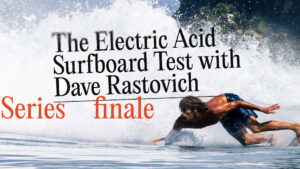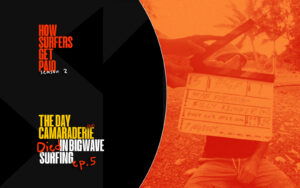Is The 5/3 The Go-To Cold Water Wetsuit Of The Future?
A brief inquiry into the necessity of 4mm neoprene.
We made a bit of a faux pas in our recent Best Wetsuits Of 2025 test.
In the film, our able-bodied test pilot (and official Stab TikToker), Josiah Amico, said that Orca is a “kiteboarding” brand making their foray into surfing.
Not true. Orca Wetsuits have never been a kiteboarding brand. They did, however, start making wetsuits 30 years ago for triathlons and open-water swimming. But, they have recently applied their three decades of neoprene knowledge to the surf world.
To make up for the slip, we thought we’d review their fanciest, state-of-the-art suit. It’s one that they weren’t even allowed to feature in Best Wetsuits Of 2025 because it wasn’t a 3/2 — and one that’s captured the gaze of the Stab office as it hangs to dry out back… “Ooo, it’s so fuzzy.”
It’s called the “Kabuki 5/3 U-Zip”.

Objective Stats:
The Kabuki U-zip is 100% handcrafted in Japan and is made of Yamamoto rubber — you know, the limestone-based neoprene that has been lab-tested to be 99.7% water-impermeable and more durable than the petroleum-based neoprene used in most wetsuits.
However, this is not your run-of-the-mill Yamamoto rubber. It’s a hyper-local, proprietary blend that Orca uses. And, each suit is made individually by hand.
As you see in the video above, it has Orca’s “Smoothskin Finish” — sometimes referred to in parking lots as “seal skin” — which lets less water in and, more importantly, almost entirely eliminates windchill.
The panels are stitched together (like all wetsuits) but then are reinforced with a proprietary Japanese adhesive glue and a specialized durable tape over the top. However, Orca designed the suit to have as few panels as possible, leading to less stitching, less water inside the suit, and more flexibility.

The suit has no stitching at all (besides the knee patch) on the bottom half of the wetsuit for the sake of flexibility and impermeability.
It’s got 5mms of neoprene on the core, chest, and legs, and three millimeters on the rest of the body for mobility. All areas that are most frequently in the water are 5mm.
It’s got the latest U-Zip technology, which will likely be the new standard for all 4/3s and 5/4s by 2026, as the zipper tech is just so much better than all that’s come before.
Subjective Pros, Cons, & Tips (After Testing The Suit Ourselves):
Pros:
— The first time I surfed in the Kabuki, I wasn’t told it was a 5/3. I thought it was a 3/2 and didn’t bat an eye. I just thought it was super warm 3/2. It’s so flexible and comfortable that it legitimately feels like you’re wearing your trusty springtime suit — combined with more warmth than I’ve felt with any other 4/3, or 5/4 even.
— The U-Zip lets zero water in and the wider shoulders take any restriction you’ve felt in a 5/4 or 4/3 out of the equation.
— Because the legs have no stitching and they’re only three millimeters thick, surfing in it feels freer and easier than any winter suit I’ve ever worn.
— The fuzz on the inside makes you feel very snug, and the outside of the suit is so soft and supple it’s like being hugged by a mama otter.

Tips:
— Some people advocate for getting a 4/3 or 5/4 one size bigger than you usually get with a 3/2. But, because of the wide shoulders and 3mm shoulders and arms, we’d advise sticking with your normal suit size.
— Because of the Smoothskin and the five millimeters, the suit may be too warm for some regions, even in the winter. You’ll have to look at water temps near you and make your own decision.
Cons:
— You pay for all the Pros. The suit comes in at a hefty $1,119.00. However, this suit is made with similar material as BeWet wetsuits uses, and those suits have been known to last 10+ years. So, it could pay off in the long run.













